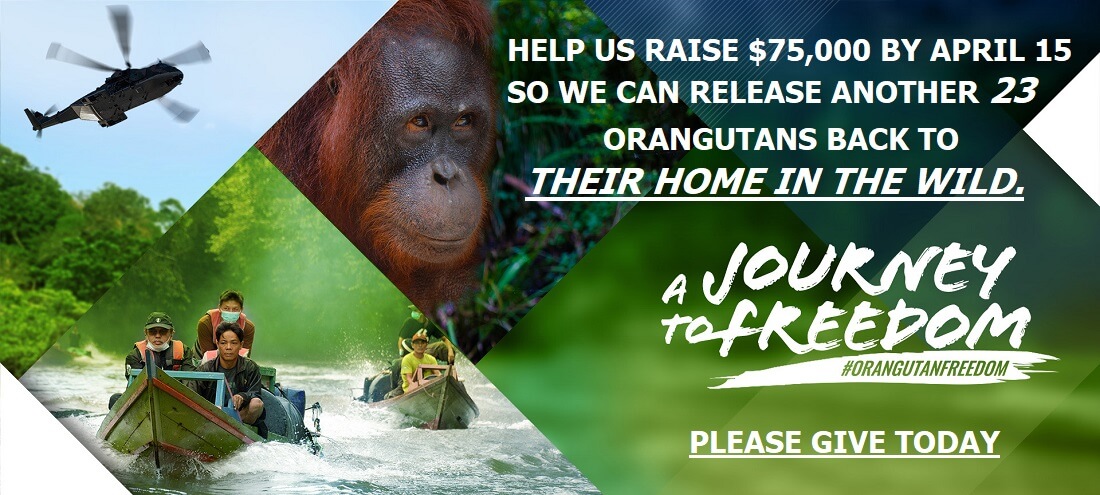Is Conservation Guerrilla Warfare Dead, or Just Turned Corporate?
The Jakarta Globe, Commentary, By Erik Meijaard
13th February 2015
Conservation is like guerrilla warfare, or at least it used to be.
Our “enemy” — logging companies, plantations, mines, bad government, illegal animal traders, illegal hunters, you name it — was so much bigger than the groups of conservation-minded people who disagreed with the way they operated. The “enemy” was also richer, got more societal support, and had political connections that conservationists could only dream of.
Like the Viet Minh or Mujahideen, conservation realized a long time ago that we were not in a position to fight a conventional war with those that we opposed. We were far too small to engage in trench wars in which normally two similarly sized and equipped armies face each other from either side of a line drawn in the sand.
Instead, conservation traditionally focused on fighting strategic battles — such as getting a particular area protected or new anti-conservation law rejected — and seeking to undermine the opponents’ strength and their public support. The Sea Shepherd Conservation Society and its annual battle with Japanese whalers in Antarctica is a good example.
With pretty small financial means, conservation has won many such battles. The conservation movement has also been successful to get conservation principles onto the political agendas, into mainstream media, and into public discourse.
But the war is far from won, especially in places like Indonesia and Malaysia, where species and habitats are disappearing at shockingly rapid rates, and environmental disasters are rapidly increasing. There is an ongoing need to pick and win strategic battles. When I look at the conservation movement, however, the guerrilla-style wars seem to be on its way out.
Apart from a handful of organizations, most conservation organizations and individual conservationists are now playing it safe. Which groups are really still fighting for the protection of a particular area or population of a threatened species? Who is sticking out their neck, risking the ire of the government, police or immigration authorities?
Instead, most of us — and I very much include myself — have been sucked into processes. We are pretty much all in the trenches of political war games now.
From a movement characterized by demonstrations, flag waving, and tree-chaining, we are now one typified by buzzwords such as: green economy, sustainability, moratoriums, alternative energy, reforestation, trade-offs, integration and my all-time favorites, the win-win solution and its even more ambitious cousin, the illustrious “triple-win” solution.
We wear suits and ties, conduct studies, sit in meetings, attend conferences, develop policy briefs, talk to media, blabber in social media, engage so-called “local communities,” and the most recent pastime, we work with big business.
I think these changes are driven by two main factors.
First, there was the 1990s idea to somehow integrate conservation and development objectives. Fencing off nature at the expense of the people who once lived there and preventing all development became an outdated concept.
Traditional conservation was no longer in line with how the world and its views on rights and ethics were changing. So, integrating we did, and the line between friend and foe became increasingly obscure.
Second, conservation has been successful. Many international conservation organizations are large multinational operations with annual incomes of over $100 million, and tens of thousands of employees. Such scales of operation and the concomitant need for brand protection come with certain responsibilities. As a result, many conservation organizations have become risk adverse, which doesn’t really fit a guerrilla lifestyle.
All fine, and I am a firm believer in this new approach of engagement. But I also believe that we have to watch ourselves as a movement. As guerrillas our principles were pretty clear; we knew what we stood for. But now that we go hand-in-hand with the former enemy those principles are much less clearly defined.
I work with an oil palm company that has a few hundred orangutans on its land. Maybe without my input those orangutans would have lost their habitat a long time ago. But maybe the oil palm company shouldn’t have been there in the first place. Where do we draw the line?
Many conservation organizations are probably asking themselves that same question. Where once the line in the sand was very clear, now the sand is shifting below our feet, and many are confused about exactly what we are fighting for.
Don’t get me wrong, the guerrilla spirit still lives. Getting Harrison Ford to interview the previous forestry minister, current People’s Consultative Assembly (MPR) Speaker Zulkifli Hasan, was a good old-fashioned stunt, which embarrassed and annoyed a bunch of people, but also painfully revealed how much more Indonesia could do about illegal deforestation.
Still, the history of guerrilla organizations is a warning signal for how the conservation movement could lose its relevance. Because insurgencies pit the weak against the strong, most still end up failing. They are beaten or are absorbed by the governing forces.
So, it is important that as a bunch of aging conservation guerrillas we consider where to go next.
Like a reporter from The Economist recently wrote: “In guerilla warfare, what matters most is the ability to share the story, not the facts on the ground. This is how guerrillas are able to win wars even as they lose battles.” We should keep that in mind when we prepare for our next battle.
Erik Meijaard is a conservation scientist coordinating the Borneo Futures initiative.
Original article can be found here





